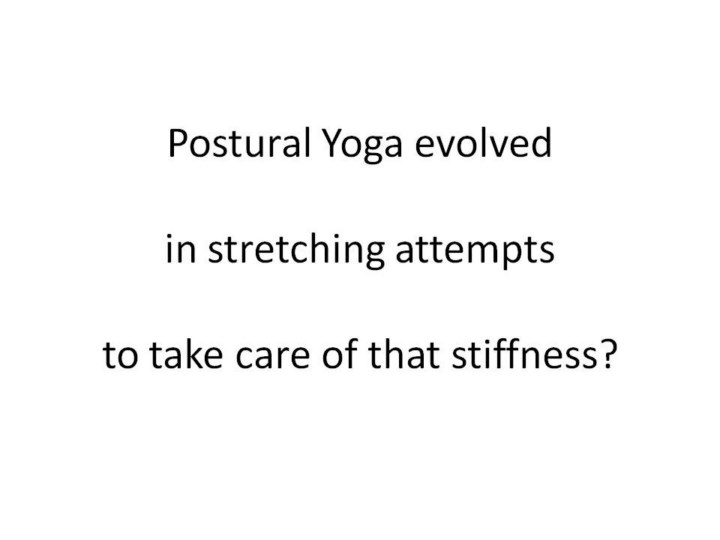| front |1 |2 |3 |4 |5 |6 |7 |8 |9 |10 |11 |12 |13 |14 |15 |16 |17 |18 |19 |20 |21 |22 |23 |24 |25 |26 |27 |28 |29 |30 |31 |32 |33 |34 |35 |36 |37 |38 |39 |40 |41 |42 |43 |44 |45 |46 |47 |48 |49 |50 |51 |52 |53 |54 |55 |56 |57 |58 |59 |60 |61 |62 |63 |64 |65 |66 |review |
 |
Has postural evolved from intuitive attempts to relieve muscle stiffness? “Yoga poses are held for prolonged periods, initially stimulating and subsequently inhibiting myotatic reflexes. During muscle stretch, intrafusal (IF) muscle fibers are facilitory and the golgi tendon organs GTO inhibitory. IF fibers initially stimulate brisk muscle contraction, as in the patellar reflex, a reaction initially stronger than the GTO’s inhibition, but after 60–120 seconds, the IF adjusts signal intensity, and the GTO’s inhibitory response predominates, favoring increased stretch and relaxation. The agonist–antagonist relationship invoked by yoga practitioners is harder to observe. Quadriceps contraction induces hamstring relaxation (reciprocal relaxation), while yoga promotes quadriceps tightening in this situation for a better hamstring stretch. ” http://www.ncbi.nlm.nih.gov/pmc/articles/PMC4676622/
|